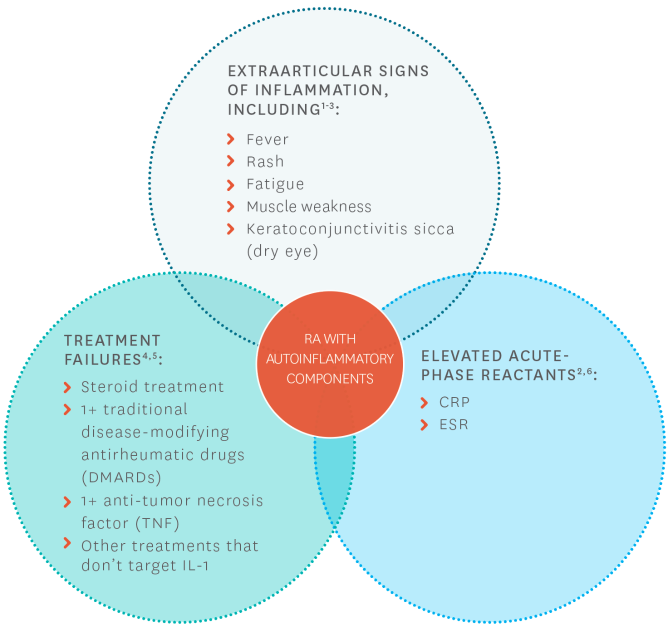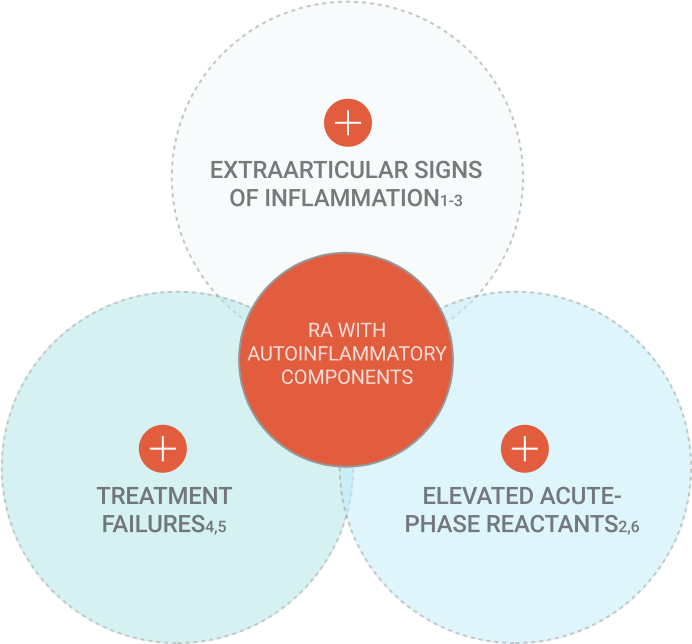Patient ID
Some RA patients don’t fit the standard profile
Identifying an autoinflammatory component in your patient’s RA is a multifactorial process. Start by reviewing a few general criteria for some important context.
Download this chart

Answer a few questions to see whether KINERET could be right for your patient.
NextFind out if your patient is right for KINERET.
Just answer these 4 simple questions.
If you have a patient with difficult-to-treat RA, this 60-second survey may help you determine whether he or she is suitable for KINERET.
- 1
Steroid Response
- 2
Treatment History
- 3
Signs and Symptoms of Inflammation
- 4
Acute Phase Reactants
Results

Kineret candidates typically try and fail steroids, DMARDs, and anti-TNFs before initiating therapy, although this isn’t always the case.1, 3, 5

While Kineret may not be right for your patient at this time, it is important to understand the signs and symptoms of interleukin-1 (IL-1)—driven inflammation for future consideration1-5:

- Steroid resistance
- Lack of response to DMARDs and anti-TNFs
- Extra-articular signs and symptoms, such as fever, rash, headache, fatigue, muscle-related symptoms, keratoconjunctivitis sicca or dry eyes
- Elevated acute phase reactants (CRP and ESR)
Your patient might be right for Kineret

Based on your answers, your patient’s RA might be mediated by interleukin-1 (IL-1), which could mean he or she is a candidate for Kineret.3
Steroid resistance, lack of response to DMARDs/anti-TNFs, extra-articular evidence of inflammation, or elevated CRP or ESR can be signs of IL-1–driven autoinflammation.1-5
To refer your patient for Kineret treatment, download our referral form.


